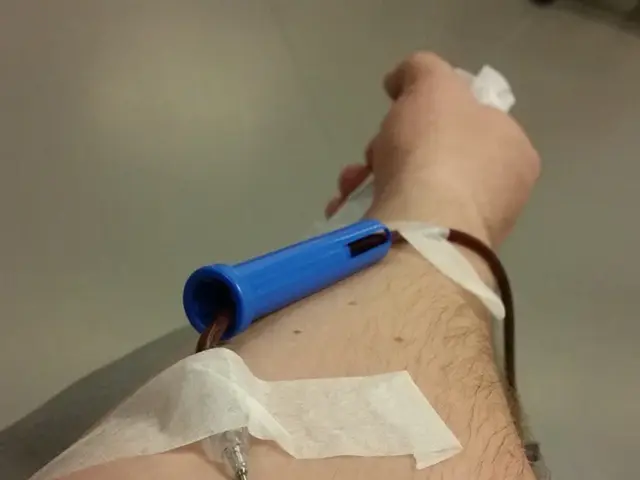Interview with PAC Dynamic's CEO, Jonathan Grinstein
AI-Powered Heart Failure Treatment: An Interview with PAC Dynamic CEO
Jonathan Grinstein, CEO of Chicago-based PAC Dynamic, discusses the company's mission to revolutionize heart failure care through personalized AI analysis. The company has developed a groundbreaking technology that assesses heart function using data on blood flow and energy use, enabling physicians to make informed decisions and optimize treatments for individual patients.
David Kertai inquired about PAC Dynamic's purpose, and Grinstein explained their dedication to prioritizing patients in heart failure management. By evaluating a patient's hemodynamic signals, the pressures and flows inside their heart, the company calculates the heart's energy efficiency, offering unique insights typically unavailable in routine clinical practice.
Grinstein elaborated on how PAC Dynamic's analysis helps predict patient responses to heart failure treatments. By building a comprehensive computer simulation using each patient's medical data, they can recreate the heart's real-life function, assessing aspects not typically measured in regular care, like energy usage and efficiency. An AI algorithm, trained on a database of past patients, predicts how new patients will respond to different treatments, allowing doctors to make more precise therapy decisions tailored to each individual.
PAC Dynamic also aims to leverage data and real-time analytics to improve smart medical devices. By focusing on optimizing heart recovery by balancing complex heart function interactions, the company ensures that devices provide the correct level of support without causing complications. Future plans involve automating this process with a closed-loop system, allowing medical devices to adjust settings in real time to optimize heart function and aid recovery.
Grinstein shared the impact achieved by PAC Dynamic's innovations, noting that their direct influence is limited due to the startup's stage in obtaining FDA clearance. However, the scientific principles behind their algorithms are already being applied to improve risk assessment and treatment timing in the medical field, as demonstrated at the University of Chicago in heart replacement therapy cases.
Grinstein expresses optimism for the future of PAC Dynamic and AI in healthcare. The company aims to extend its technology to all heart failure patients, even those in the early stages, by providing personalized treatment recommendations to slow or even reverse heart failure. The goal is to make therapy patient-specific, ensuring that the right treatment reaches the right patient at the right time.
Though PAC Dynamic's specific technology details are not provided, the broader trend suggests that AI will continue to play a crucial role in enhancing the precision and effectiveness of heart failure treatment. The future of AI in this field involves integrating technologies for enhanced diagnosis, treatment prediction, and personalized care plans, including predictive analytics, data integration, and continuous monitoring. However, rigorous validation, ethical considerations, and careful management of patient data security will be essential to ensure safety and efficacy in the integration of AI in clinical practice.
- Grinstein highlights PAC Dynamic's goal to extend their AI technology to all heart failure patients, aiming to slow or even reverse heart failure with personalized treatment recommendations.
- PAC Dynamic leverages data and real-time analytics to improve smart medical devices, ensuring they provide the correct level of support without causing complications.
- By building a comprehensive computer simulation using each patient's medical data, PAC Dynamic's AI algorithm predicts how new patients will respond to different treatments.
- The company's groundbreaking technology assesses heart function using data on blood flow and energy use, offering unique insights typically unavailable in routine clinical practice.
- The future of AI in heart failure treatment might involve integrating technologies for enhanced diagnosis, treatment prediction, and personalized care plans, including predictive analytics, data integration, and continuous monitoring.
- Grinstein refined that scientific principles behind PAC Dynamic's algorithms are already being applied to improve risk assessment and treatment timing in the medical field, demonstrated at the University of Chicago in heart replacement therapy cases.








